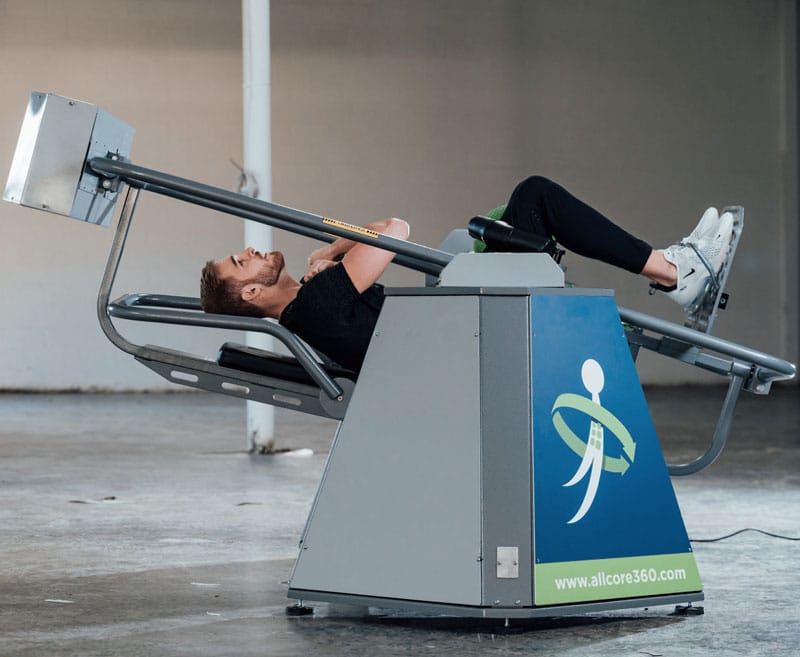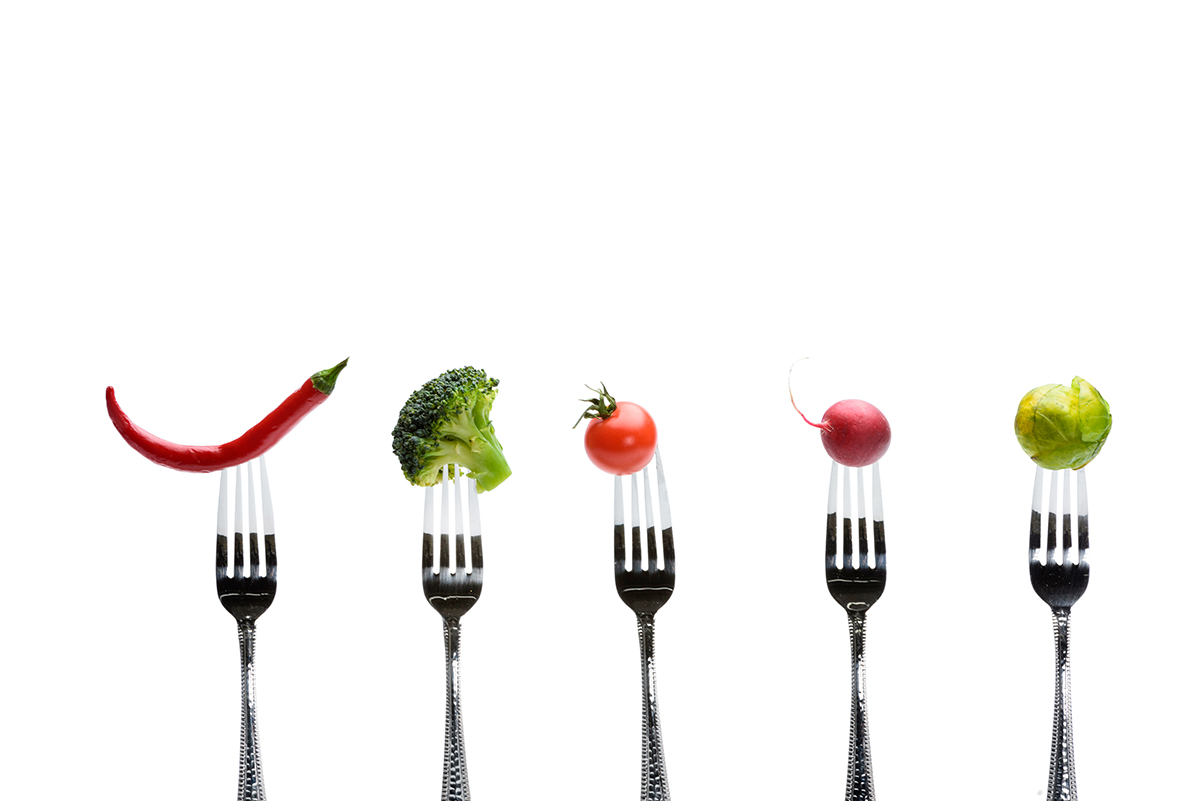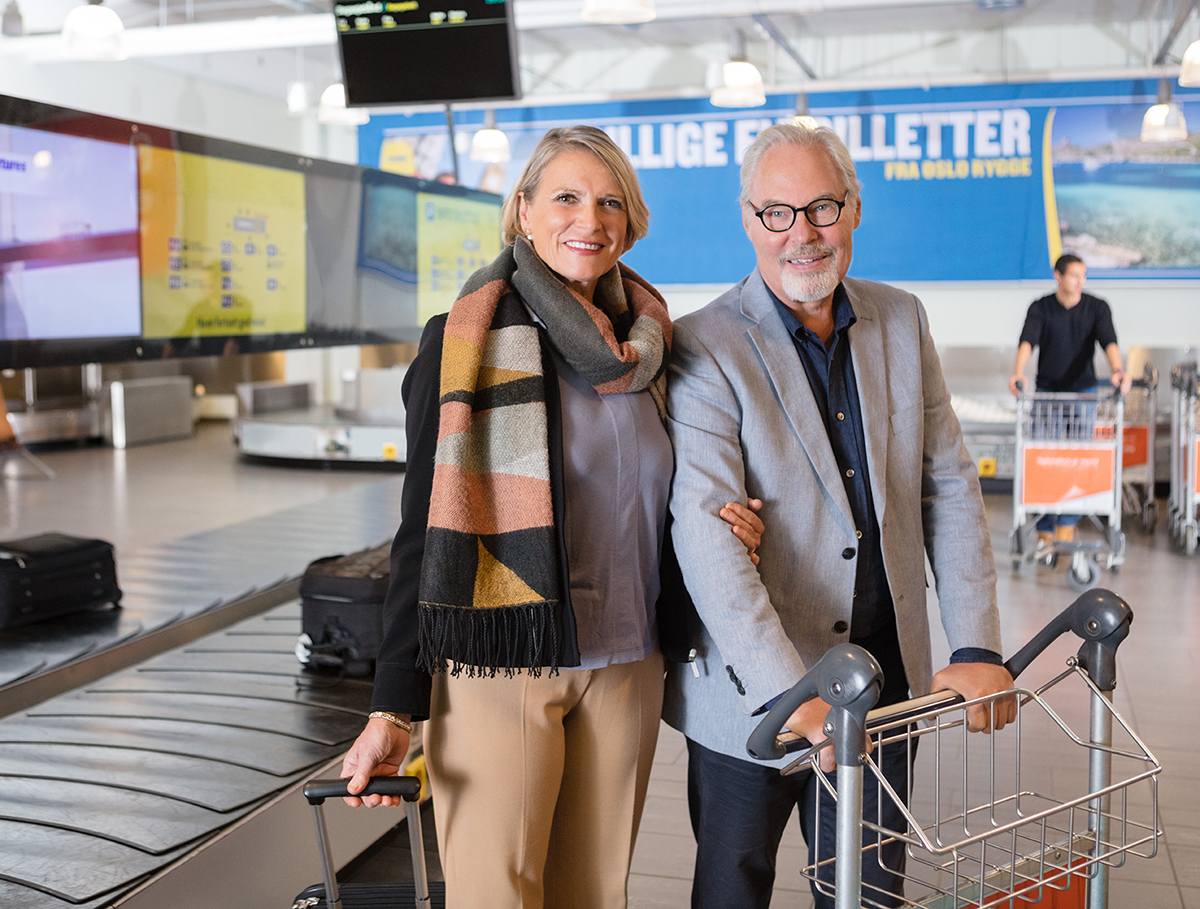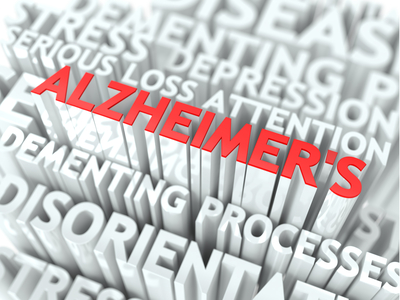Chiropractor’s broken back leads to back pain invention
After enduring two separate spinal injuries and the excruciatingly painful rehabilitation that followed, Scott Bertrand, DC, decided to take treatment into his own hands by inventing the AllCore360° System: a system designed to isometrically train every core muscle by leveraging the users body weight against the resistance of gravity during 360º full body rotations.
Before the idea for AllCore360° came about, Bertrand’s journey began with a leap — and ended with a fractured lower back from a skydiving incident during his time at the 101st Airborne Division in Kentucky. The physical therapy, according to Bertrand, was unbearable, and ultimately he chose to discontinue treatment.
About 20 years after that incident, Bertrand suffered a second debilitating spinal injury after diving into a pool and colliding with another swimmer. Recovering from a broken neck was just as painful as his first experience with physical therapy, which got Bertrand asking: Why isn’t there a better, less painful way to treat spinal injuries and reduce back pain?
That question led him to create the AllCore360°, the first medical system designed to rehabilitate the core with virtually no impact. The system engineers patients to perform balanced, isometric contractions in a 360-degree rotating plank without moving their body or applying pressure to their wrists, elbows or shoulders. It works by targeting, and therefore strengthening, the 50+ muscles in the core that surround, support and protect the spine and internal organs.

Because of its low-impact and core-targeting design, many chiropractors aside from Bertrand have found the AllCore360° to be an effective way to not only treat patients with back pain but to strengthen and rehabilitate athletes as well. At Gray Chiropractic & Sports Associates in North Carolina, the AllCore360° has proven to be a valuable new service for treating everyone from young athletes with sports injuries to retired athletes with chronic pain. In addition to benefiting patients with improved outcomes and faster recovery, the system now generates Lawrence Gray, DC, an additional $5,500 in revenue per month.
“The AllCore360° is a game-changer,” Gray shared with the AllCore360° team. “As a clinician, we have our everyday approaches, but we need to step outside of the box to invite different perspectives on the paradigm that we once had, and look at ways that we can enhance in a short period of time.”
Paralympian Curtis Lovejoy also found AllCore360° to be a beneficial part of his ongoing therapy. At the age of 29, Lovejoy was paralyzed from the neck down after a devastating car crash in 1986. Today, he’s a five-time Paralympics champion with 12 world records, 500 gold medals in swimming, and 200 gold medals in fencing. AllCore360° helped Lovejoy activate the nerves in his core muscles, eventually building strength that led to improved swim times and successful forays into fencing.
Hearing stories from people like Gray and Lovejoy is what it’s all about for Bertrand. Creating AllCore360° was a process that took two spinal injuries, many prototypes, and over 30 years of refinement. In the end, he considers it worth it, thanks to the documented results from thousands of successful patient stories.
Interested in learning how AllCore360° can benefit your patients and your practice? Head over to allcore360.com for more information.
Reprinted with permission from Scott Bertrand.
Scott Bertrand is the proud father of 2 and the grandfather to 3 fabulous people. He traveled to Atlanta after serving in the 10st Airborne to pursue a chiropractic career in the early 80s. After graduating from Life University in 1985, Dr. Bertrand happily cared for the chiropractic needs of a burgeoning city next to the world’s busiest airport, College Park, Ga. In 2011 he discontinued chiropractic care and focused on his passion to assist those who would benefit from core training and co-founded Alltrand LLC. Alltrand LLC is the organization that offers his invention, the AllCore360, to the medical fitness world.








 Have you ever wondered why a particular diet, workout routine or cleanse offers remarkable results for some people, but not others?
Have you ever wondered why a particular diet, workout routine or cleanse offers remarkable results for some people, but not others?

 Day after day, I hear athletes complain about their (seemingly) uncontrollable snacking habits. Some believe they are hopelessly, and helplessly, addicted to chocolate. Others believe eating between meals is sinful & fattening; snacking is just plain wrong. Some equate snacking to doing drugs. They bemoan they are addicted to sugar and can’t eat just one cookie. Snacking is all or nothing.
Day after day, I hear athletes complain about their (seemingly) uncontrollable snacking habits. Some believe they are hopelessly, and helplessly, addicted to chocolate. Others believe eating between meals is sinful & fattening; snacking is just plain wrong. Some equate snacking to doing drugs. They bemoan they are addicted to sugar and can’t eat just one cookie. Snacking is all or nothing.